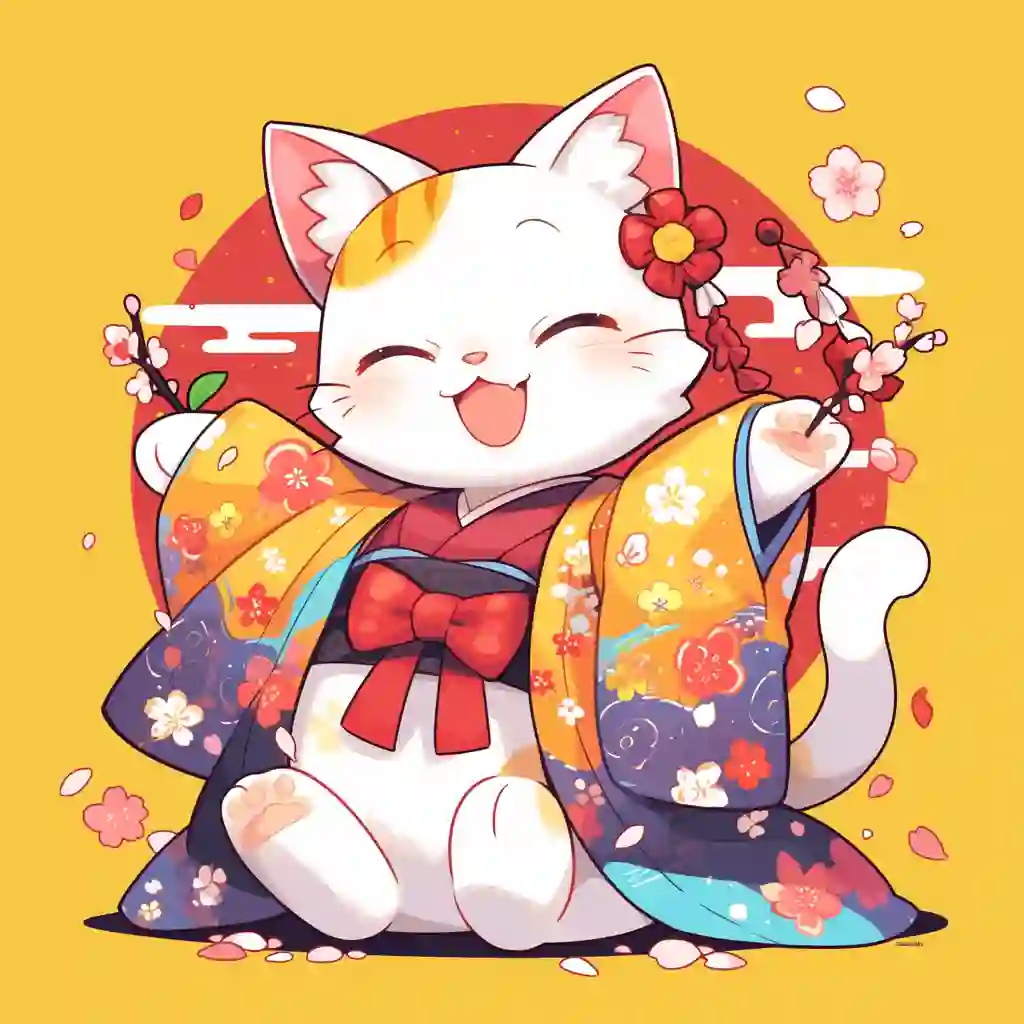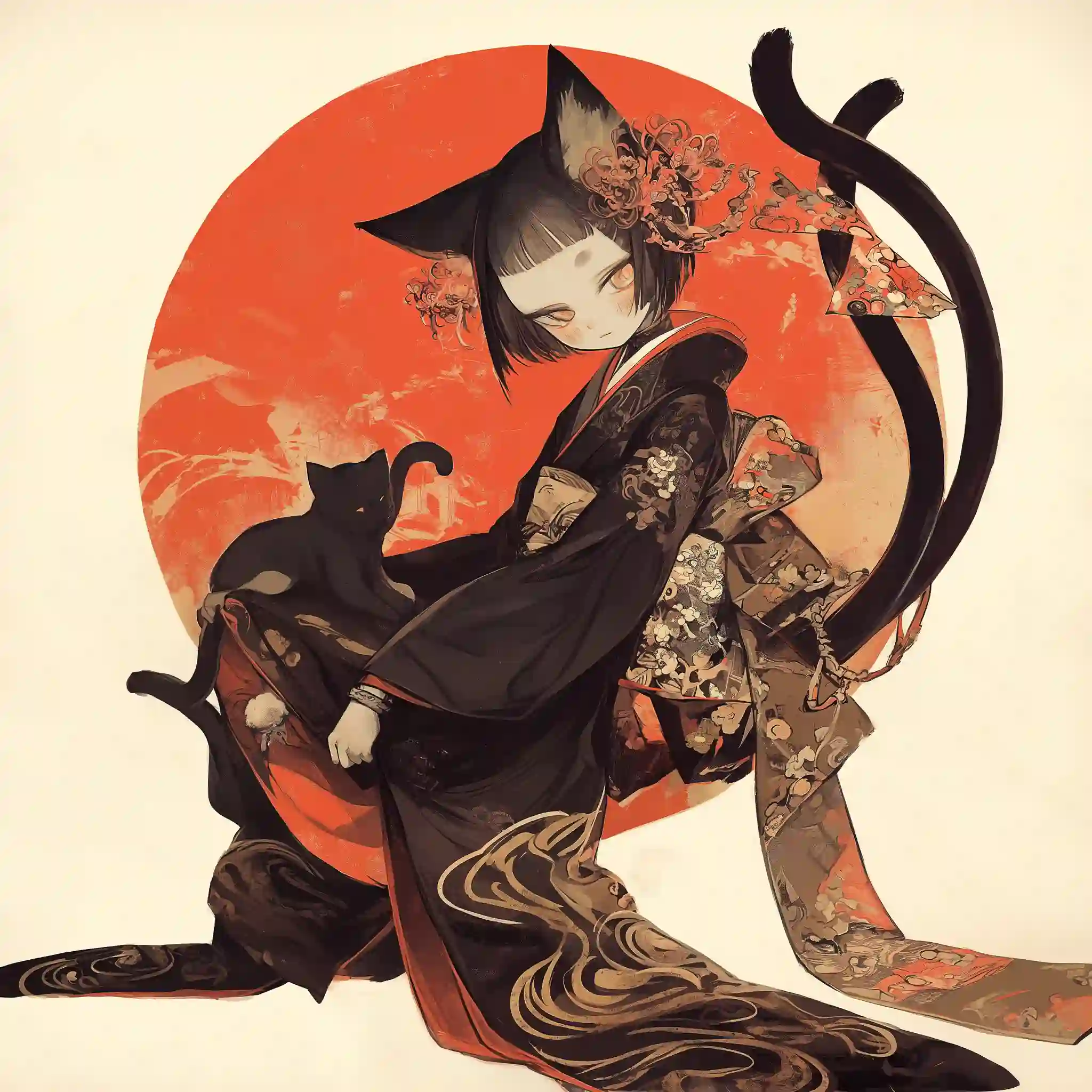Bakeneko/Nekomata
A Bakeneko is a mythical creature from Japanese folklore, specifically within the realm of supernatural beings known as yokai. The term “Bakeneko” translates to “changed cat” or “monster cat” in English. Bakeneko are often considered a type of supernatural cat with magical abilities and characteristics that distinguish them from ordinary felines. Bakeneko are believed to have the ability to shape-shift into a human form, usually taking on the appearance of a woman. In this transformed state, they may use their human guise to interact with people
There is no distingushing difference beteween a Bakeneko and a Nekomata, other than a Bakeneko has a single tail and a Nekomata has a dual tail.

PHYSICAL CHARACTERISTICS
Size and Appearance: In its normal cat form, a Bakeneko/Nekomata may not appear much different from an ordinary domestic cat. It is typically depicted as a regular-sized cat with fur ranging in color. The cat may transform into a larger, more menacing creature with supernatural abilities when in its Bakeneko state.
Split Tail: One distinctive feature of the Bakeneko/Nekomata is its tail , A bakeneko has a single tail, and the Nekomata has a split or forked tail.
Facial Expressions: Bakeneko/Nekomata are often depicted with a more human-like or expressive face when in their supernatural form. This may include the ability to make facial expressions that convey emotions similar to those of humans.
Demonic Features: In some depictions, the Bakeneko/Nekomata may have additional demonic features, such as sharp claws, fangs, or horns.
Human Transformation: When the Bakeneko/Nekomata transforms into a human form, it typically takes on the appearance of a woman. The transformed Bakeneko may retain some feline characteristics, such as cat-like eyes or ears, betraying its true nature.
ORIGIN
The Bakeneko is often associated with mysterious and paranormal occurrences, and its folklore has been shaped by a combination of historical beliefs, cultural influences, and storytelling traditions.
In Japan, cats have long been regarded with a mixture of reverence and superstition. Domestic cats were kept in households for practical reasons such as pest control, but they were also seen as having spiritual significance. Folklore surrounding supernatural cats, including the Bakeneko and the related Nekomata, likely emerged from a blend of animistic beliefs, animism being the attribution of a soul or spiritual essence to non-human entities.
The transformation theme common to the Bakeneko, where a cat gains supernatural abilities as it ages, is a recurring motif in Japanese folklore. Stories of shape-shifting animals, particularly foxes (kitsune), tanuki (raccoon dogs), and cats, are prevalent in Japanese mythology.

POWERS AND ABILITIES
Shape-shifting: The Bakeneko/Nekomata is known for its ability to transform from an ordinary cat into a humanoid form, often taking on the appearance of a woman.
Speech: In some legends, the Bakeneko/Nekomata is believed to gain the ability to speak in human languages.
Hypnotic Gaze: The Bakeneko/Nekomata is said to possess a mesmerizing or hypnotic gaze, which it may use to control or influence others.
Necromancy: In certain tales, the Bakeneko/Nekomata is associated with the ability to control the dead or communicate with spirits.
Fire Manipulation: Some stories attribute pyrokinetic abilities to the Bakeneko/Nekomata, allowing it to summon and control fire.
Demonic Features: The Bakeneko/Nekomata may be depicted with demonic attributes, such as sharp claws, fangs, and horns.
Longevity: It is believed that a domestic cat transforms into a Bakeneko/Nekomata after reaching a certain age. As a Bakeneko, the cat is said to gain increased intelligence, magical powers, and potentially an extended lifespan.


